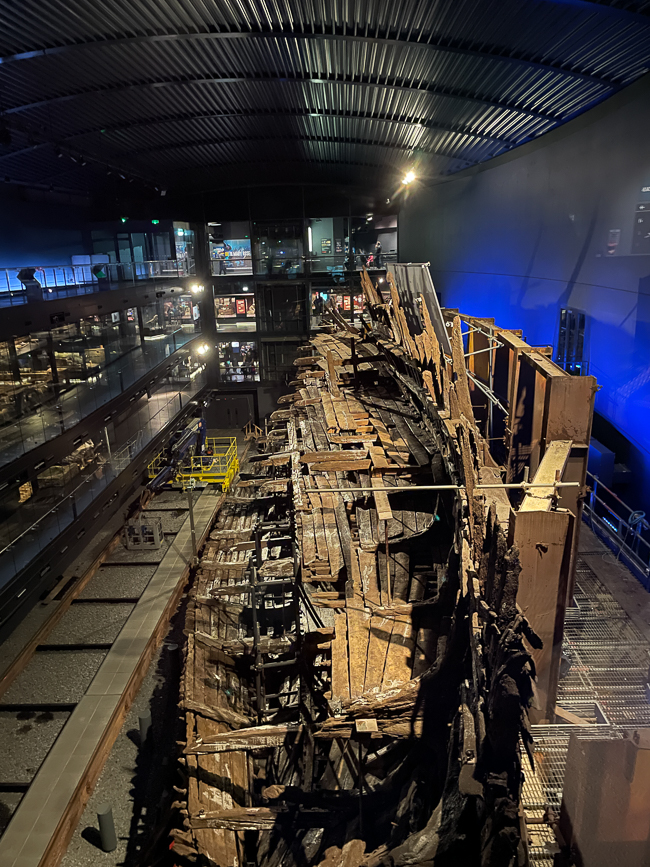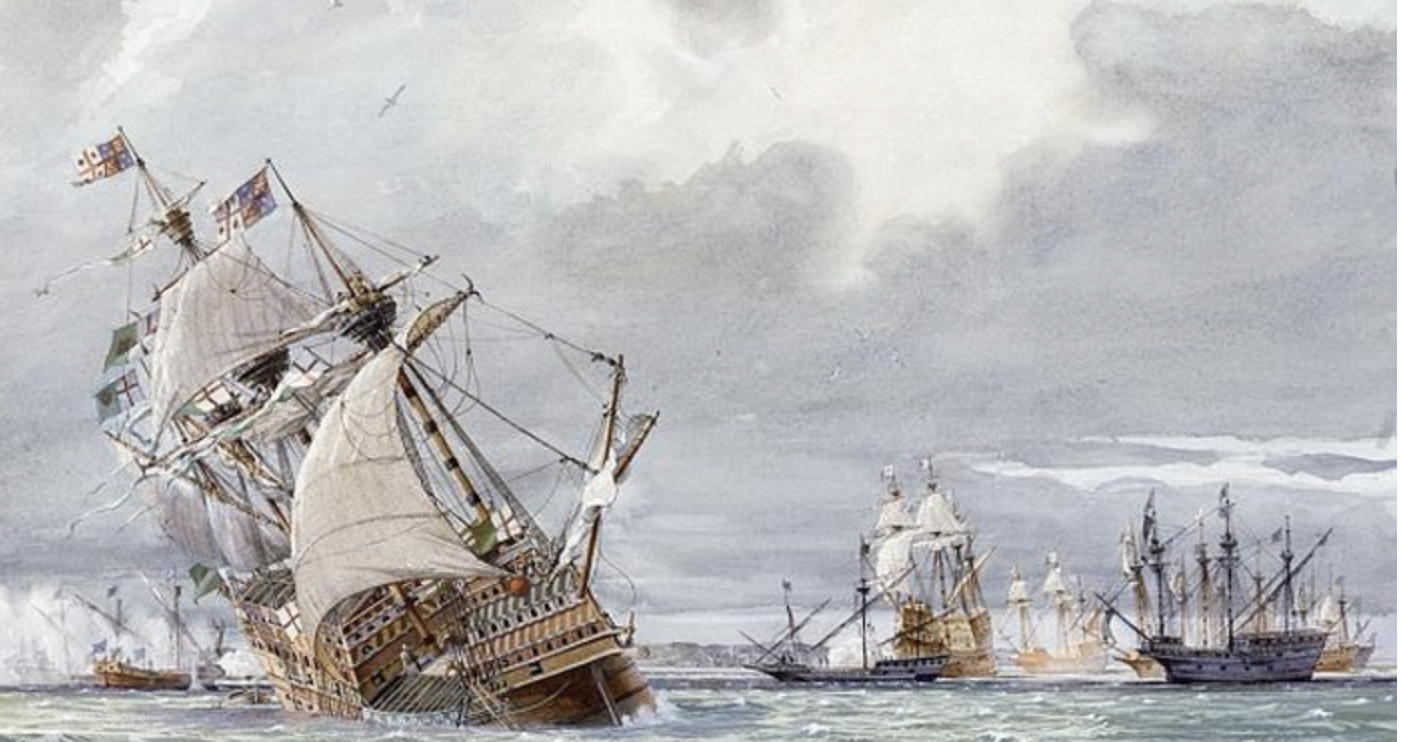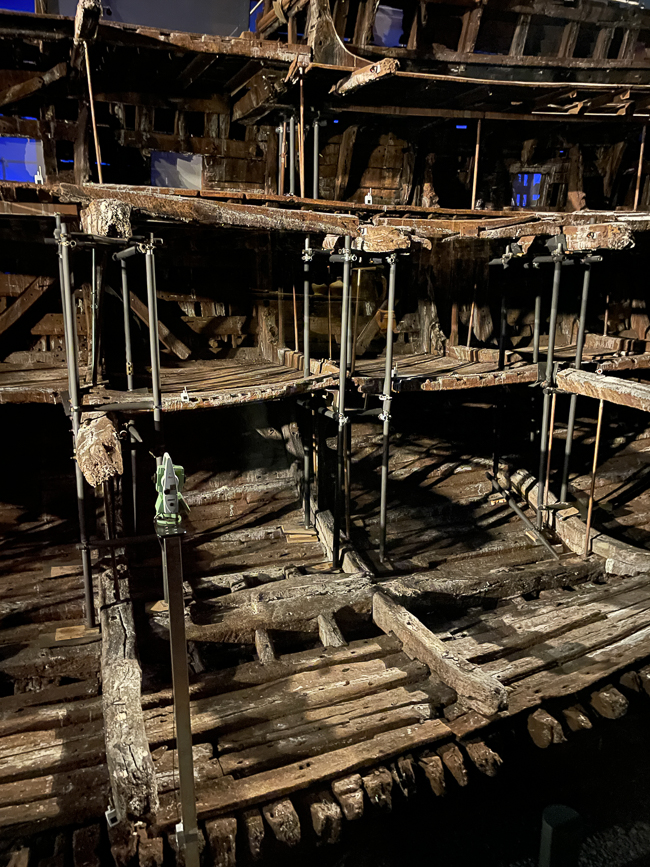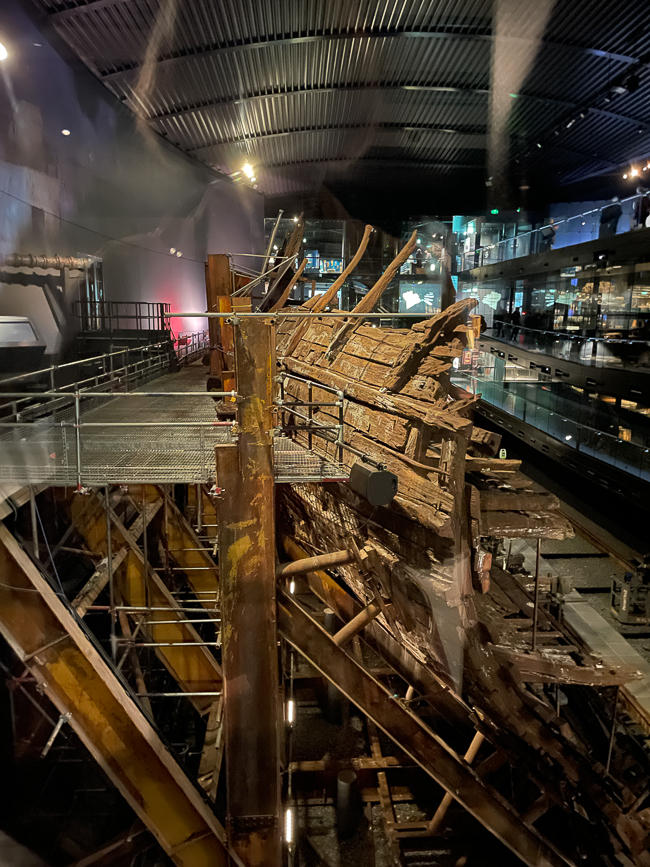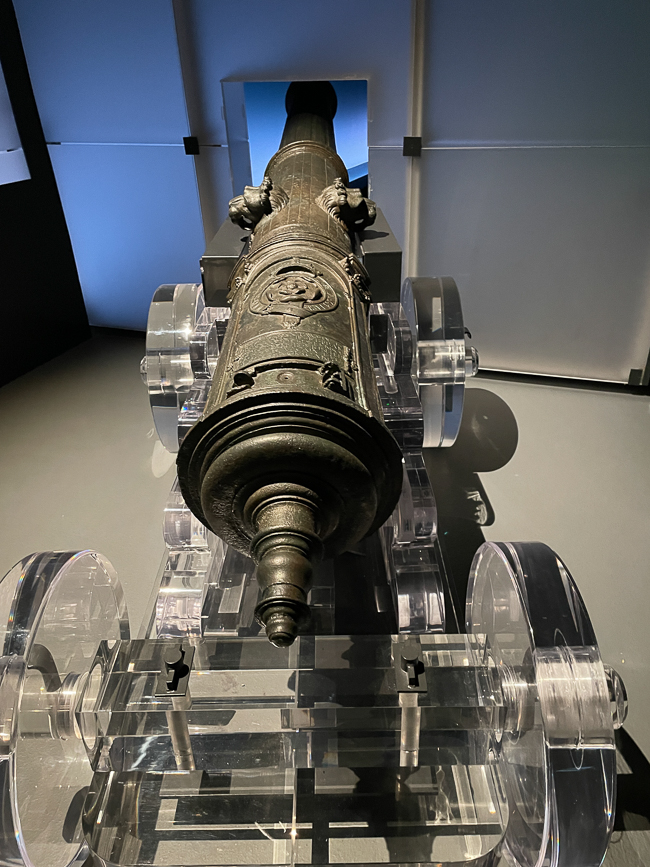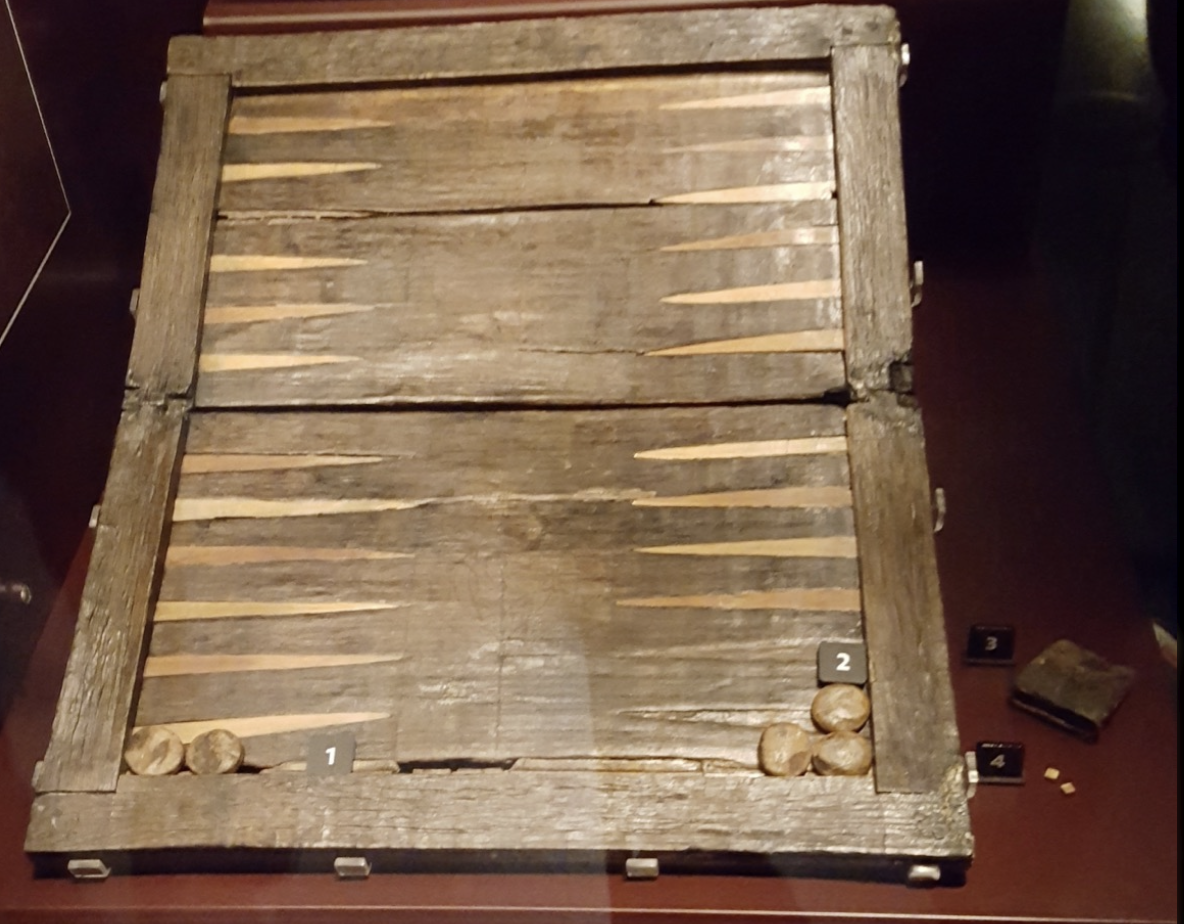Portsmouth UK
November 9th, 2023
If you want to get an honest and complete look at what naval service and war were like in the 1600s, 1700s, and early 1800s, visit Portsmouth, England.
The quality of education you receive while touring both the Mary Rose and the Victory is second to none.
The Mary Rose was a warship in Henry VIII’s “Army by Sea”, built in Portsmouth and launched in 1511. She had a career that spanned 34 years.
When Henry VIII came to power in 1509, he inherited a small navy from his father, with only a couple of sizeable ships. Henry commissioned two new ships to be built: the Mary Rose and the Peter Pomegranate. The large vessels represented Henry’s ambition for naval expansion and to send a clear message to England’s enemies.
The Mary Rose required a huge amount of timber. It is said that around 40 acres worth of trees were used to build her. She was built to accommodate up to 700 sailors, soldiers, gunners, surgeons, and cooks.
In 1545, there were 140,000 men in the English forces on land and at sea. This was almost twice the population of London at the time.
The Mary Rose sank in the naval Battle of the Solent. The battle took place on the 18th and 19th of July 1545 during the Italian Wars between the fleets of Francis I of France and Henry VIII of England. The Solent lies between Portsmouth and the Isle of Wight.

The Cowdray engraving of the battle of the Solent, 1545. The painting was lost in a fire, but copies remained.
When the Mary Rose went down, she took over 500 men with her to the bottom of the sea. However, there may have been up to 700 men on board, of which fewer than 40 survived. Most of the skeletons recovered by archaeologists were of young men in their twenties. Scientific tests have also shown that her crew was diverse, with sailors from Europe, including Spain and Italy, and others from further away, including North Africa.
The Mary Rose was probably carrying supplies for two weeks when she sank. This was an enormous quantity of supplies and weight. These included 1800 kg of beef, 900 kg of pork, 750 fish, 3350 kg of hard unsweetened biscuits, and 31,500 liters of beer.
The only confirmed eyewitness, an unknown Flemish sailor who escaped from the sinking vessel, claims that the Mary Rose had fired all of her guns on one side and was turning when her sails were caught in a strong gust of wind, pushing the still open gunports below the waterline. Her reason for sinking is still debated today.
The recovery of the Mary Rose is a feat of modern science and tenacity that is rather incredible and one that took decades.
The search for and discovery of the Mary Rose was a result of the dedication of one man, the late Alexander McKee. McKee initiated ‘Project Solent Ships’ to investigate wrecks in the Solent. His hope was to find the Mary Rose.
Using sonar, the team discovered a strange shape underneath the seabed. Between 1968 and 1971, a team of volunteer divers explored the area.
On the first of May 1971, diver Percy Ackland found three of the port frames of the Mary Rose.
There were 27,831 dives made to the Mary Rose during the modern excavation project, equating to 22,710 hours on the seabed.
A committee was set up to consider many different methods of raising the hull. They decided to use a purpose-built lifting frame that would be attached by wires to steel bolts passing through the hull at carefully selected points. These points were spread evenly across the section of the ship, mainly in the major structural beams.
For the first 12 years, the Mary Rose was sprayed with chilled water to prevent it from drying out while scientists conducted research into its long-term conservation.
The Mary Rose team treated the timbers with polyethylene glycol to replace the degraded timber cells, requiring spray application under 98% humidity. For 19 years, while spraying was ongoing, the ship was sealed within an insulated hotbox.
In 2013, when the Mary Rose Museum was opened in Portsmouth, the sprays were turned off, although the ship remained in an insulated hotbox as it dried. The drying process was informed by complex computational fluid dynamics to ensure that all elements of the ship received the same temperature and relative humidity, preventing variation in drying rates and, therefore, warping, shrinking, and cracking. Over three years, 100 tons of water was removed from the ship. In 2015, the drying was complete.
Over 26,000 artifacts and pieces of timber were raised from the seabed. As well as the remains of about half the crew members and a dog used as a ratter. These are all nicely displayed throughout the museum.
